Video Review: Rode Blimp (redesigned for 2014)
The wind. It’s a particular bugbear of ours when filming and presumably yours too else you wouldn’t be reading this review. As brilliant as microphones are these days, the sensitive little things can’t help but be upset by even a breath of air across their delicate pickups. It results in oh-so-nasty unwanted low-frequency rumbles and splatters all over your precious audio.
Windjammers are the solution of course, usually involving lots of long fur (though see our review of the new Rycote Softie for an interesting attempt at an alternative that sadly doesn’t quite work as we’d hoped). The basic windjammer simply slips straight into the microphone and does a reasonable job in light winds but once you start getting into stronger gusts, a bit more engineering is required and this is where Blimps come in to their own.
Rode Microphones, being a mic company, get all upset when their lovely products are battered by the breeze so they’ve got their own range of windjammers for precisely this problem. When we compared their “deadcat VMP” jammer for small on-camera mics to a Rycote product, it was, to be honest, fairly useless. So, can their own brand of Blimp do a decent job? They sent us one for us to test.
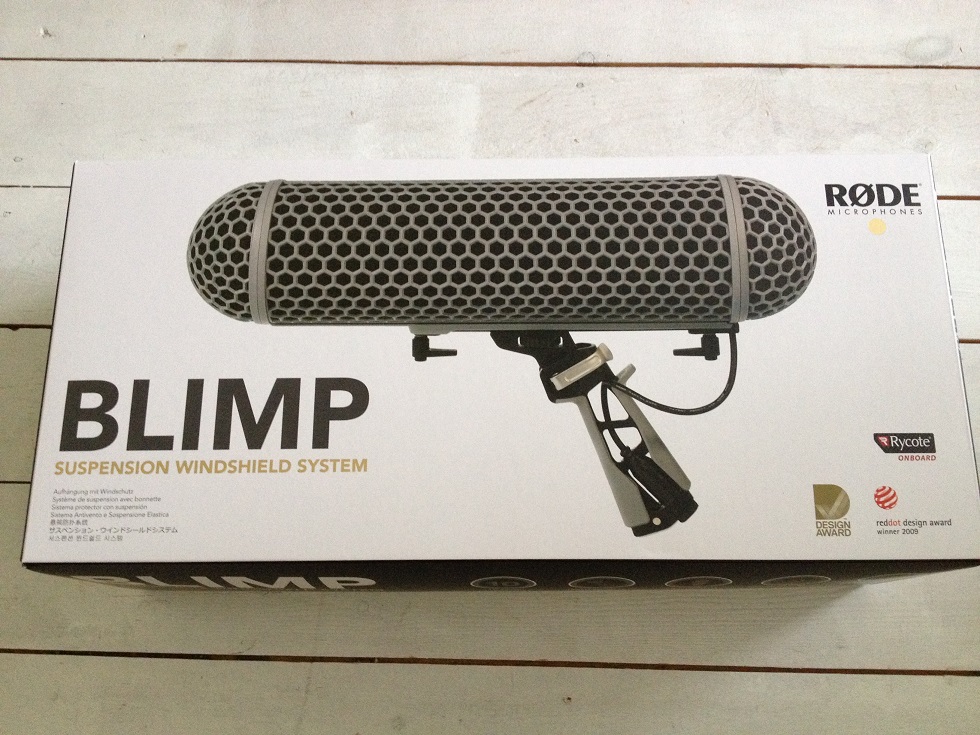
Inside the box you get the main body of the blimp, a plastic hexagonal honeycomb structure that’s internally lined with the kind of material you get in microphone pop filters. Seems logical. There’s a particularly fine instruction book with excellent diagrams and clear notes. A tiny screwdriver is included for tweaking the position of the mic mounts. And there’s a hairbrush for combing the fur on the included “dead wombat” (really, Rode?) wind jammer.
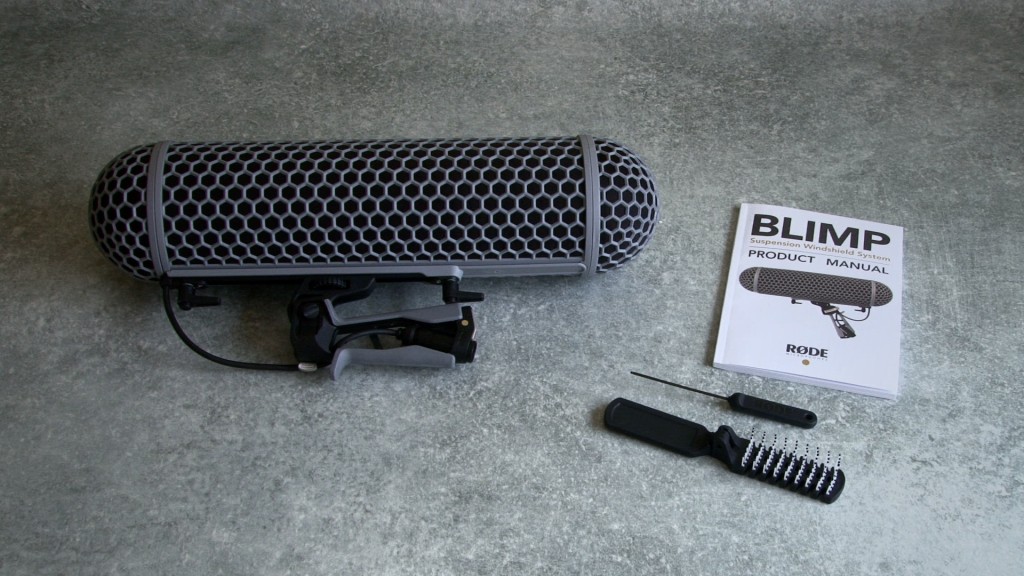
Whilst the body of the Blimp seems unchanged from the prior version, both the handle and the main mic mounting inside are new. The handle’s been made lighter via a re-design though it’s still solid to hold. From the handle, a cable (with XLR plug at the end) goes up through a mounting point along to the back of the Blimp whereupon it goes through an isolating joint into another, short stub of cable that will plug into the back of your microphone.
The handle can be loosened and slid along the bottom of the Blimp to position it to your preference, although at full travel the cable’s rather stretched especially if you’ve rotated the handle to an angle away from the rear of the Blimp. At this point the cable also gets in the way of the lever that locks the handle to your chosen position.
Furthermore, if you rotate the handle through 180 degrees (which the manual suggests you might “for greater flexibility of use”) then it will only slide a little way way along the Blimp as it once again restricted by the cable length. I reckon another two inches of cable could sort this without being too loose at the near end.
None of this is a huge problem, but you’re better off leaving the handle nearer the back of the Blimp, especially if you want to tilt it to reach some awkward audio position such as when booming it from above.
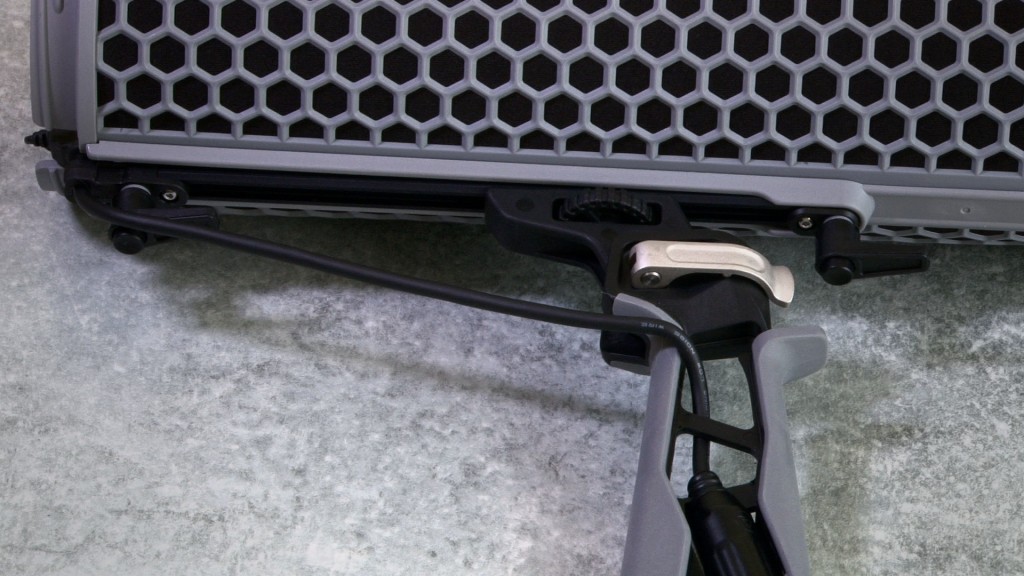
Inside the Blimp is a long plastic track on which are set two of the aforementioned Rycote Lyre suspension mounts. The prior Blimp used a traditional “cats’ cradle” type arrangement of elastic bands but these are prone to perishing, stretching and snapping. The Lyre is a solid piece of flexible plastic which appears to be largely indestructible no matter how much it flexes.
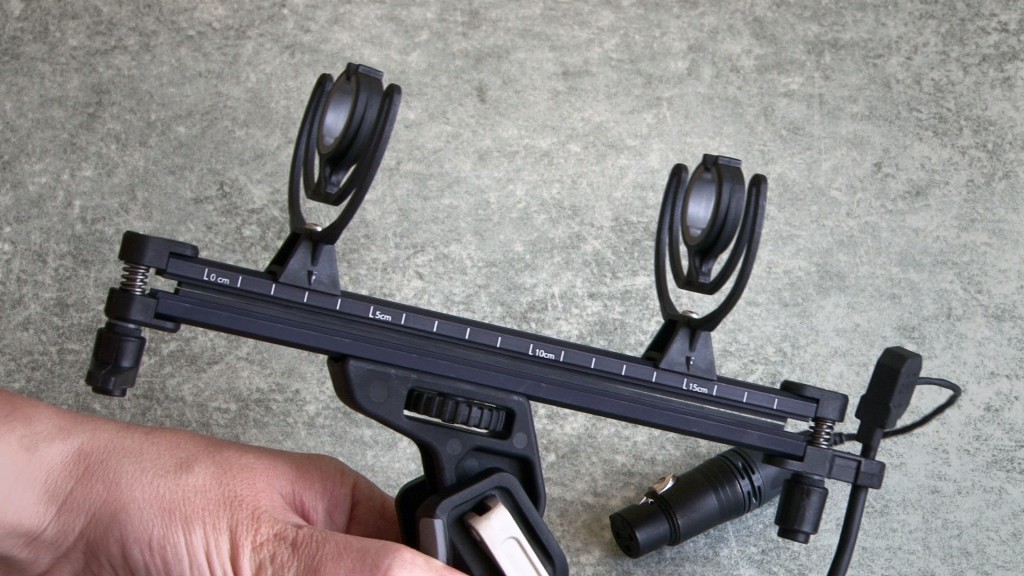
Your shotgun mic simply clips into the Lyre (each mount is moveable along the length of the device courtesy the included screwdriver), plugged into the short XLR cable and the whole assembly slotted back into the Blimp housing. Then you’re ready to record, either with or without the Wombat fur depending on the level of breeze you’re working in.
Our tests showed – no surprises really – that the Blimp with fur did an excellent job of protecting the mic from the wind. We pointed an electric fan at full blast directly at the Blimp from just a few inches away and all the mic recorded was, as required, the sound of the fan without any undue wind pickup. So far, so good.
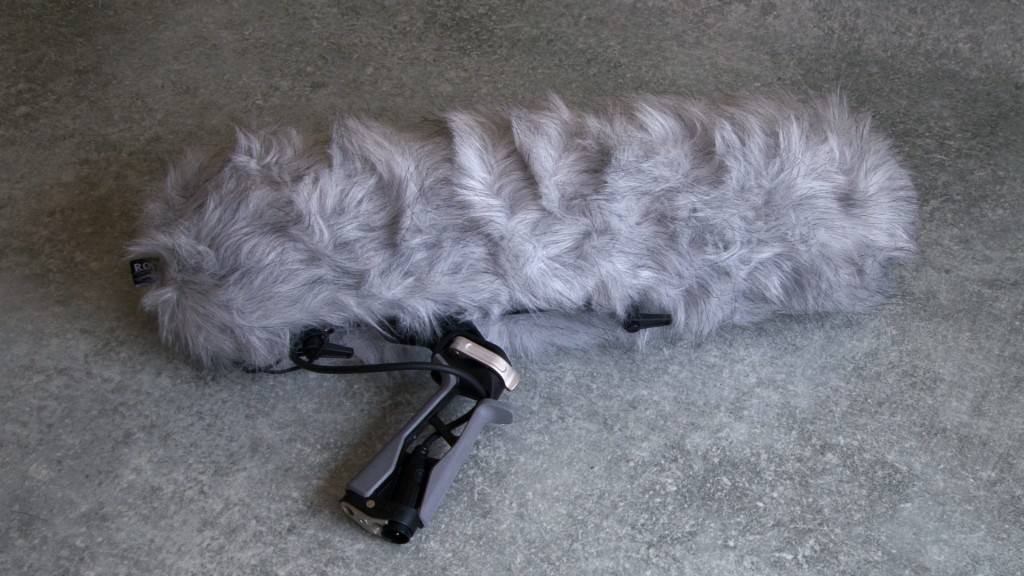
The point of this new Blimp of course is the new suspension, so how well did that work? Regular readers of Tubeshooter will think that we’re in the pay of Rycote at the moment due to a recent smattering of love for their Lyre suspension mounts both handheld and on-camera but we assure you that’s not the case, as our review of their new Softie will prove.
That said, we think the Lyre does its job well again here – no reason why it shouldn’t – and it’s easy to see why Rode licensed the technology rather than develop their own. We handled the Blimp in an overly-friendly manner for several minutes and whilst we could hear some slight pickup on the recording afterwards, it was minor and given the way we were treating the Blimp, only to be expected. In real use where a careful operator would be trying to minimise hand noise anyway, we think such pickup would be negligible and certainly inaudible.
Praise then for Rode’s Blimp. It works well as a windjammer and the new Lyre mount means you shouldn’t end up having to replace nasty fiddly elastic bands in the suspension, so it’s a long-lasting investment too. The overall construction of the Blimp feels a little light – and dare we say flimsy? – so how well it’ll hold up in the field (literally) is open to question but it’s plastic so it should be hardy we hope.
Buy one via Amazon UK and we get a bit of commission – thank you: http://amzn.to/1yDFfux
I think you’ve got the handle assembled wrong way…
Haha! It’s not “the wrong way” because the manual specifically says you may rotate the handle through 180 degrees “for greater flexibility”.
But if you do, the cable doesn’t reach! I have updated my wording to make the point clearer though, thanks.
Hi,
Would you recommend this over the Rycote Windshield system? Thanks!~
They’re both great systems (assuming you’re comparing like-for-like, Blimp vs Blimp) and you won’t go wrong with either one of them I don’t think. Your preference may well be on cost, depending on the price wherever you live in the world, and availability. But either system works great. Cheers.
This seems pretty good at half the price of a full WS4 Rycote offering £379 which with lyre this basically now is, thanks for the review.